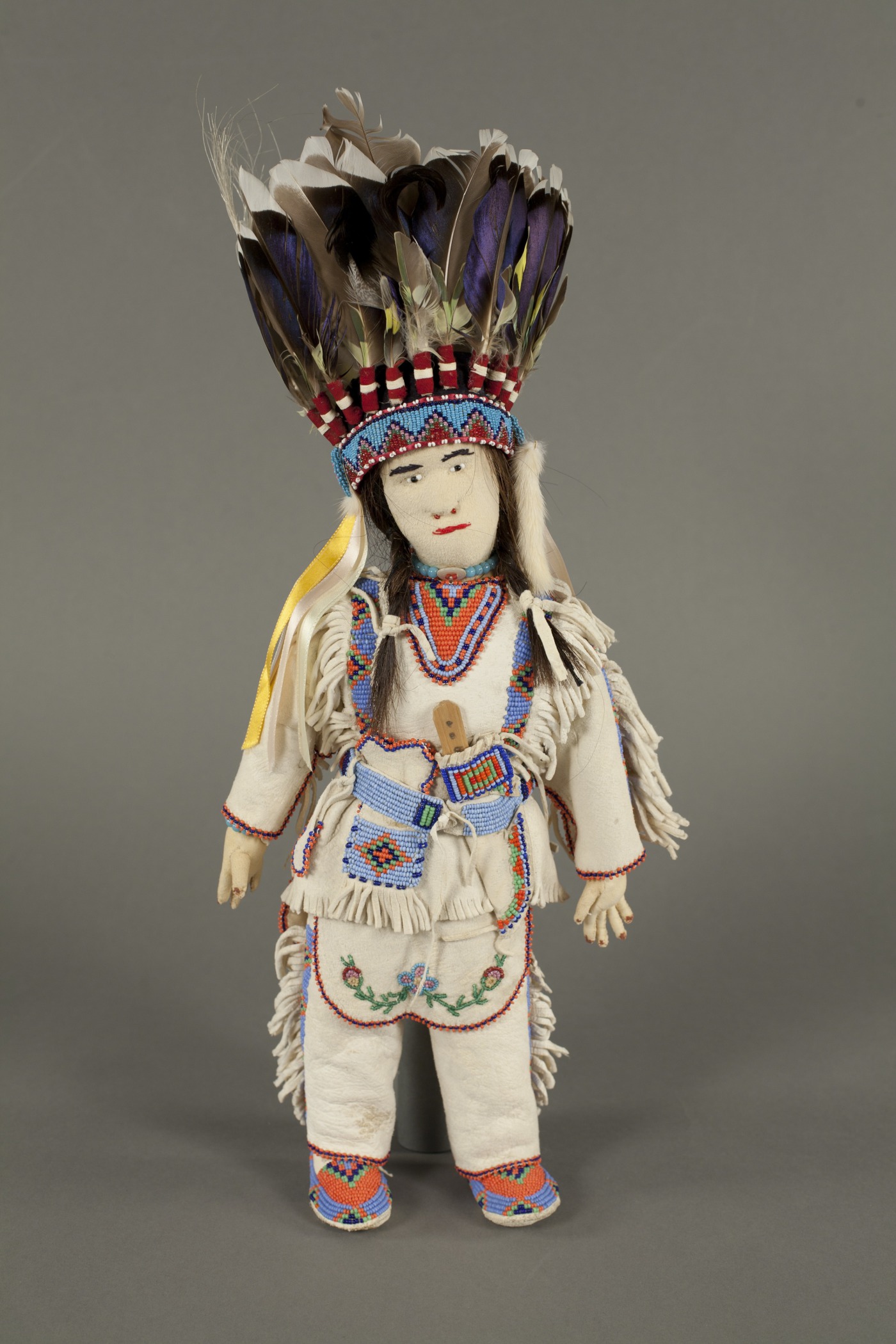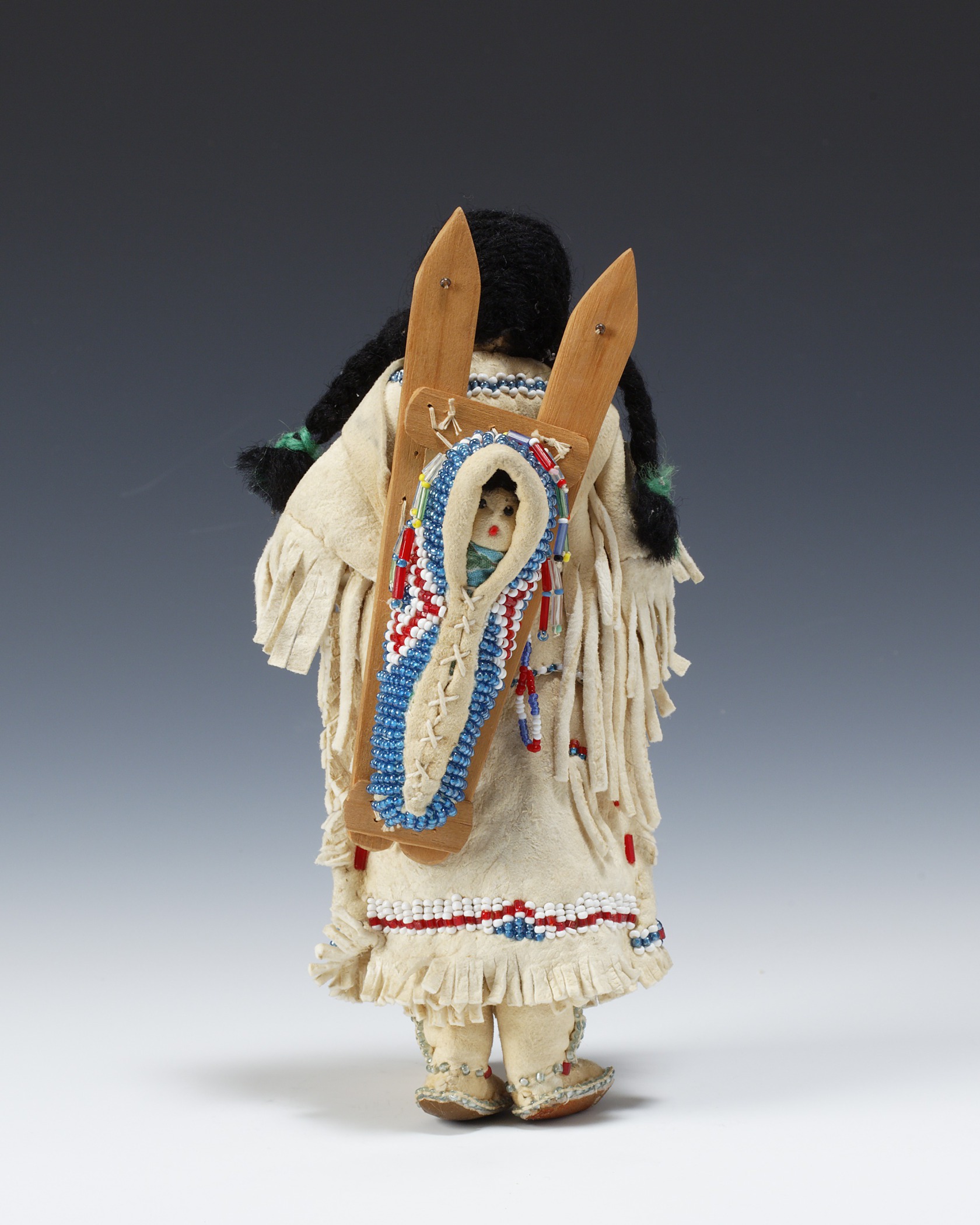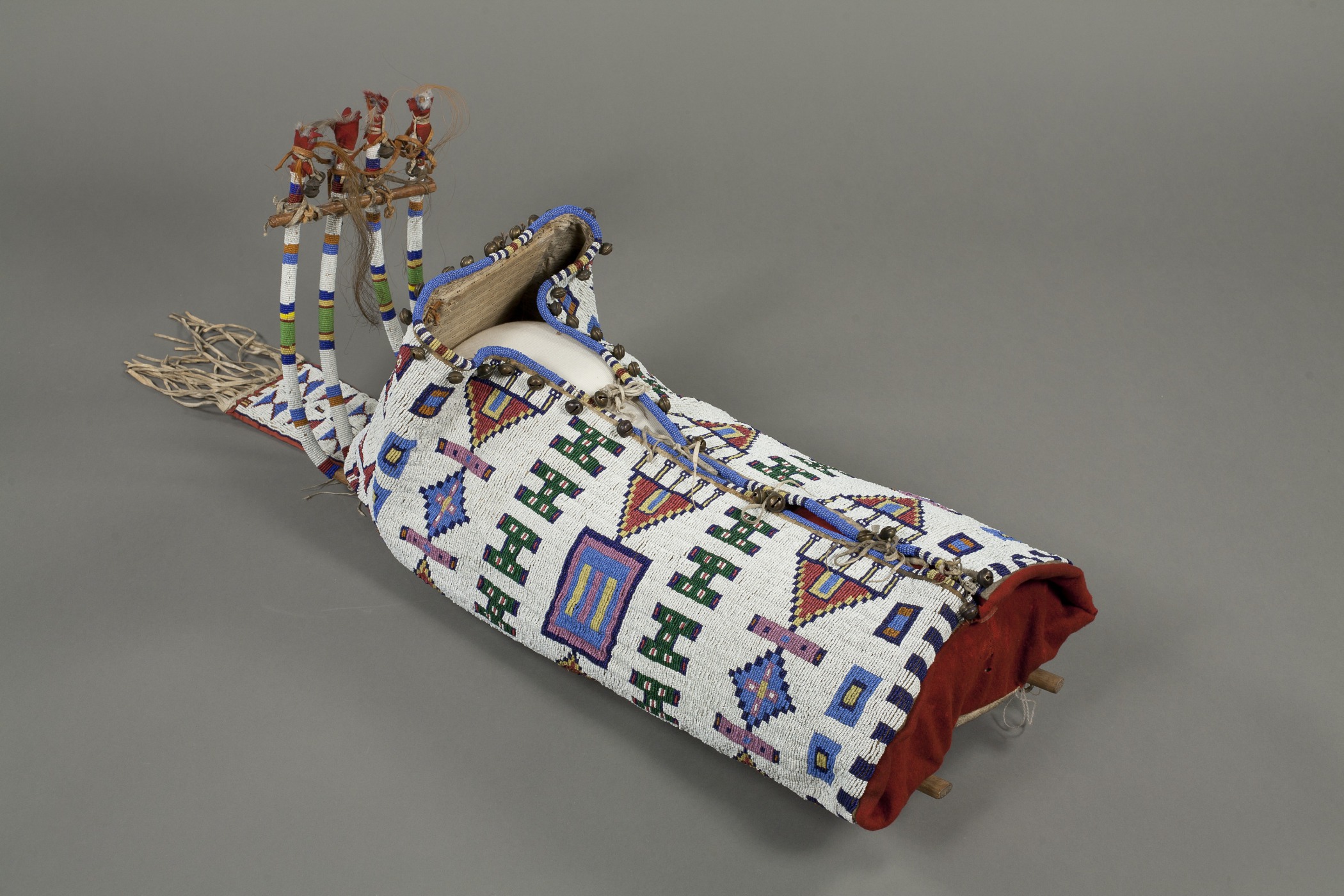Julia Ereaux Schultz, American (A’aninin), 1872–1973
Doll representing an A’aninin chief
- 1948
- Hide, glass beads, mallard feathers, parrot feathers, human hair, horse hair, ribbon, cotton cloth, ermine tails, plastic beads, button, nylon fishing line, tape, felt cloth, wood, embroidery thread, paint, graphite, and thread
- 17 5/16 × 7 11/16 × 2 9/16 in.
Hood Museum of Art, Dartmouth College: The Wellington Indian Doll Collection, Gift of Barbara Wellington Wells; 987.35.26841
This doll is one of the finest in the museum’s collection. Although it was made for sale, others like it were made for young children to teach them about their roles in society. The craftsmanship in this doll shows a commitment to teaching Indian youth about their heritage, about qualities of leadership and honor, and the precision, detail, and accuracy of Native American arts.
explore the object
Julia Ereaux Schulz made this doll in 1948. In dressing the doll, Schulz drew upon the same skills A’aninin women have always used for making traditional clothing. She gave the doll an intense, expressive face and used human hair for its braided hairstyle. The doll is made of cloth, but its fringed shirt, leggings, moccasins, tobacco bag, and knife sheath are made from animal hide. She painstakingly decorated the hide clothing with beadwork, typical of A’aninin styles.
To become a man of high standing within the community, one had to prove he was strong and brave. Only proven warriors and military leaders of the Plains could wear feathered headdress, like this one. A feather was added to the headdress for each act of bravery. This doll represents a leader with many acts of courage.
A young boy with a doll like this might have been inspired by it to one day become a great warrior and leader.
Meet the Artist
Julia Ereaux Schulz was a remarkable woman who devoted her life to the health and well being of the A’aninin people. In addition to working on a variety of health initiatives, she encouraged A’aninin women to preserve their cultural heritage. During the Great Depression, she organized older women to share their knowledge and expertise with younger women. Women sold their creations, including dolls, beadwork, quillwork, and rawhide containers, to help support their families. Schulz created this doll when she was 76 years old. She lived to be 101.
learn more
To learn more about Julia Ereaux Schulz, visit the Montana Historical Society’s Women’s History Matters blog.





